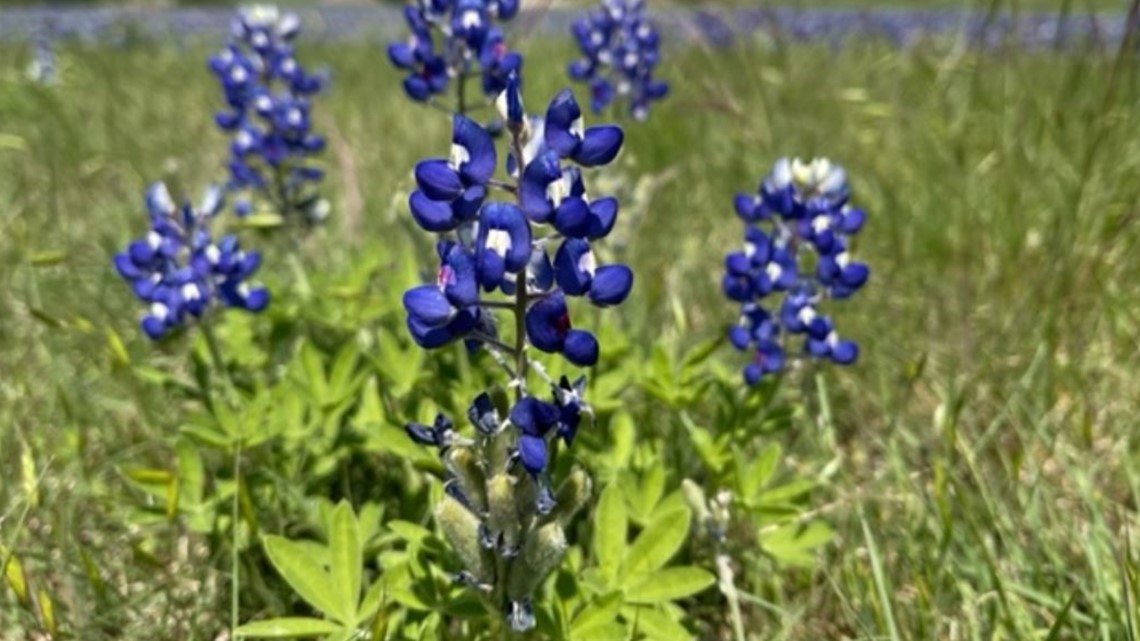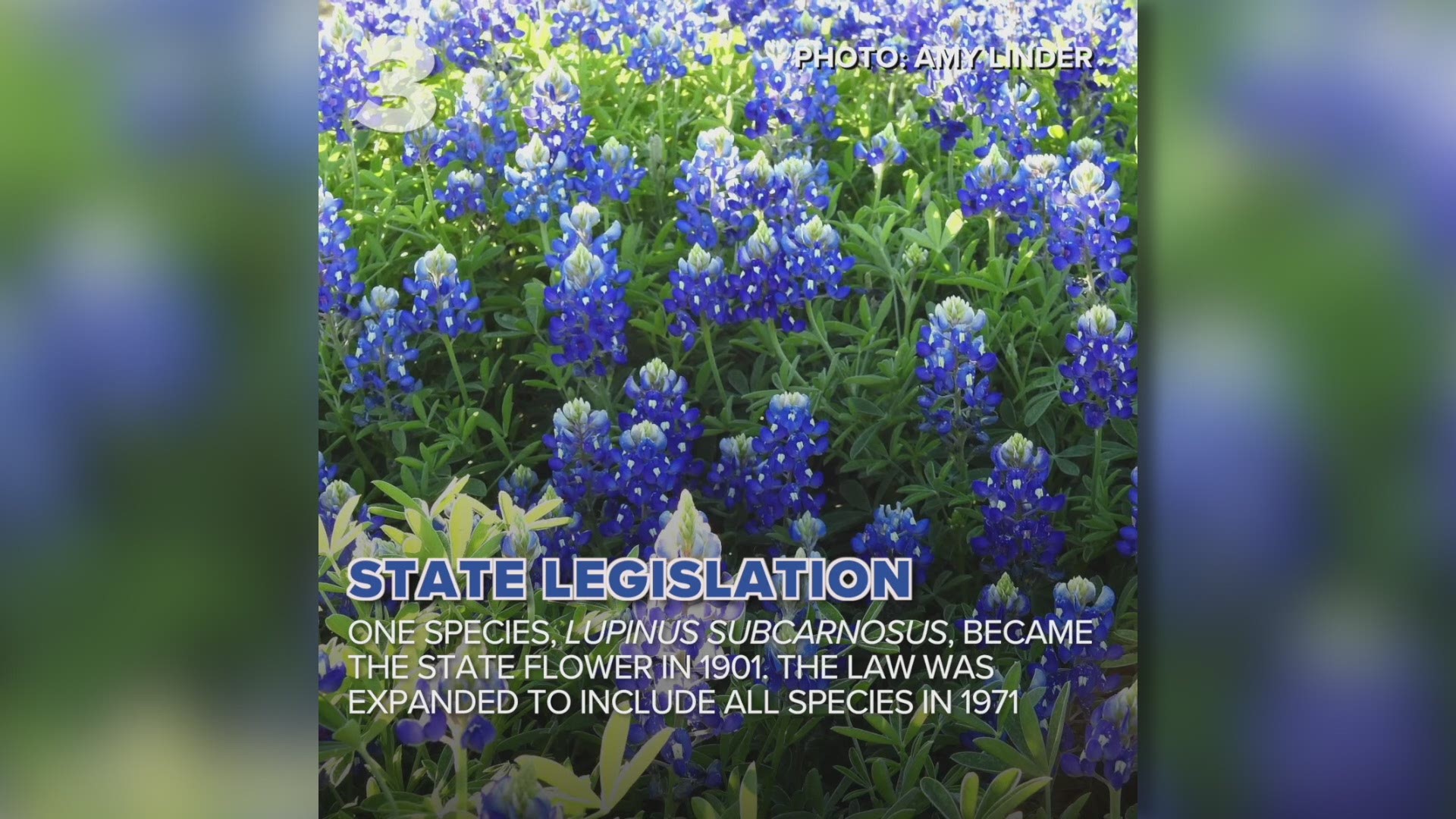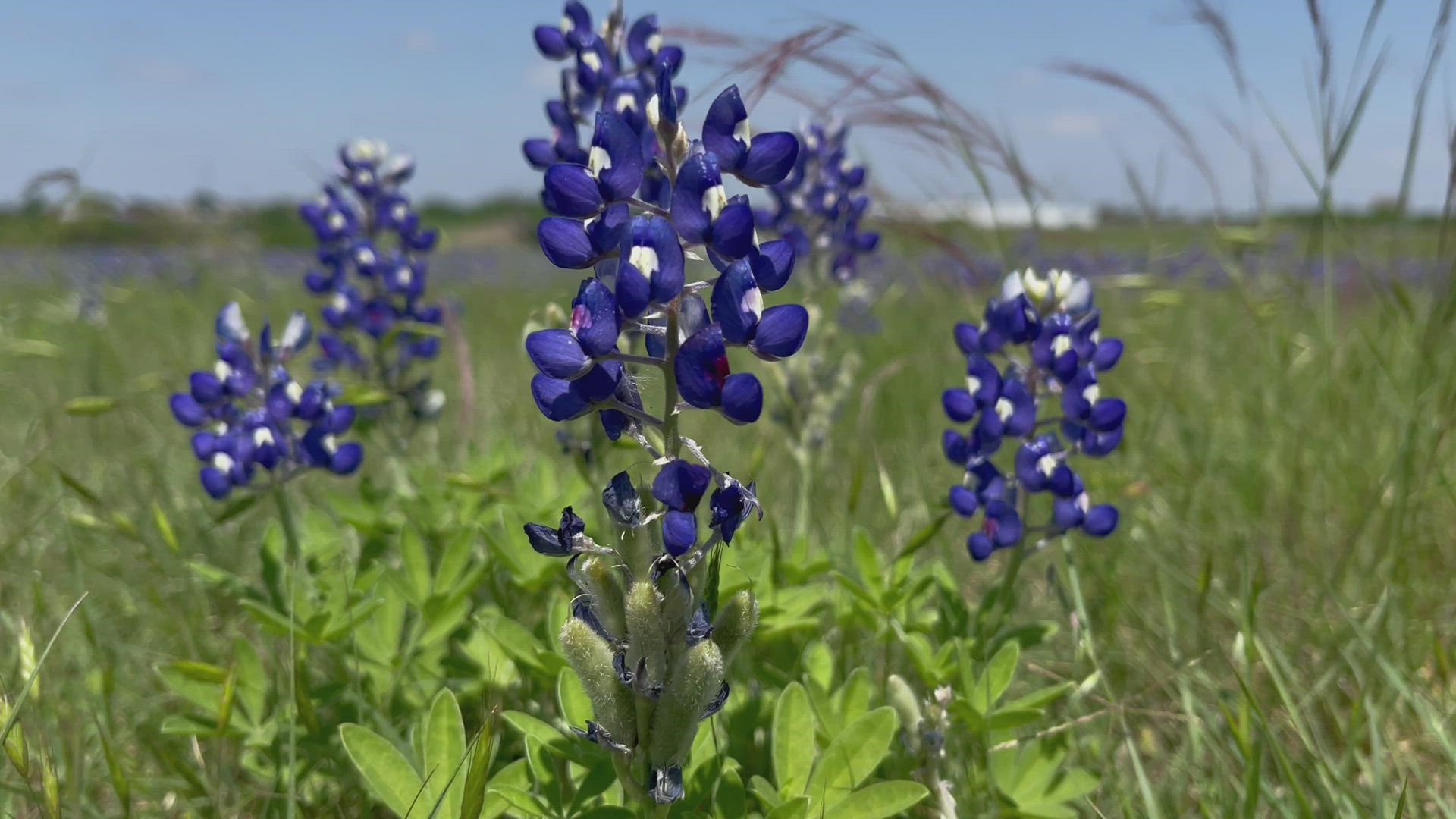TEMPLE, Texas — Driving along any Texas highway, especially in Central Texas, one cannot miss the rolling pastures of bluebonnets. Their arrival is nature's way of saying spring has arrived in Texas. Many of you might have noticed, this year's bluebonnet season is already nearing its close.
While the longevity of bluebonnet season depends on last year's rain, their short bloom is always a sight to see. I was admiring their dwindling beauty while driving along Interstate 14 in Killeen when I began to wonder: Why do we have a state flower in the first place?
Well, according to the Smithsonian, the concept of having a state flower was brought up in 1893 at the World's Columbian Exposition in Chicago, which was a commemoration of Columbus' landfall in the New World. It was a woman who led the charge behind states having their own flower.
At the exposition, Harriet W. R. Strong, a member of the National Floral Emblem society, proposed the United States have a national garland of flowers, according to the Dec. 14, 1893 issue of the Los Angeles Herald. The group of women were having a difficult time selecting one national flower and Strong made the suggestion to have a flower represent each state. It would take a few years after the exposition for the idea to catch on nationwide.
Eventually, the Texas Legislature selected the Lupinus subcarnosus as the state flower on March 7, 1901, but that did not come without a bit of competition. According to the Farmers Almanac, cotton balls and prickly pear cactus — which was doted on by a young man so heavily he earned the nicknamed, "Cactus Jack;" He would later become the vice president under Franklin D. Roosevelt — were also in the running to become state flower.
There are several stories on how the bluebonnet was selected, from the National Society of Colonial Dames of America in Texas sending beautiful bluebonnet paintings to the Texas Legislature to the flower being physically placed on senator and representative's desks.
No one truly knows the exact reason, but ultimately, the bluebonnet was selected.


But the story doesn't end there. Texas actually has six state flowers, or should I say six different variations of bluebonnets. However, only two of them are known to grow naturally in Texas.
Although, the Lupinus subcarnosus was initially selected, debate amongst some Texans brewed about that decision for almost 70 years. Many Texans wanted the fuller variation, Lupinus texensis.
Finally in 1971, the Texas Legislature added the bolder bluebonnet variant, plus "any other variety of bluebonnet not heretofore recorded," to be lumped all into one state flower.
According to Texas A&M Agrilife Horticulture, if a new variation is discovered under the Lupnius umbrella it will also be lumped in as the state flower. Currently, the six variations of bluebonnets are: Lupinus subcarnosus, L. texansis, L. havardii, L. concinnus, L. perennis, and L. plattensis, according to Kera News.
You can see any one of the six variations depending on where you are in the state. In 1930s, the Texas Highway Department began planting bluebonnets around the major highways throughout the state as part of a beautification project, according to Washington on the Brazos.
TxDOT said: “Shortly after the Texas Highway Department was organized in 1917, officials noted that wildflowers were among the first vegetation to reappear at roadside cuts and fills. In 1932, the department hired Jac Gubbels, its first landscape architect, to maintain, preserve and encourage wildflowers and other native plants along rights of way. By 1934, department rules delayed all mowing, unless essential for safety, until spring and early summer wildflower seasons were over. This practice has stayed in place for more than 60 years and has expanded into today's full-scale vegetation management system.”
Today, TxDOT still buys and sows about 30,000 pounds of wildflower seed along more than 800,000 miles each year.
Although they mainly align our highways, some places in Texas are known for their bluebonnets, like Ennis, Texas. It's home to 40 miles of bluebonnet-covered roadsides. The town was even crowned the official bluebonnet city of Texas in 1997.
Many Texans believe that it is illegal to pick bluebonnets, and while that is not true, laws do exist against damaging or destroying rights-of-way and government property. So even though picking a few flowers may be okay, individuals should not dig up clusters of flowers or drive their vehicle into a field of flowers, according to the Texas Department of Public Safety.
Also on KCENTV.com:



